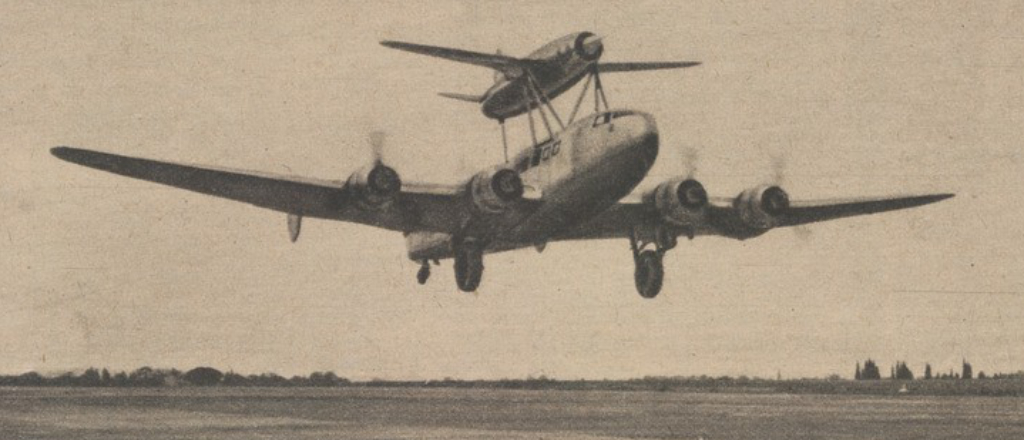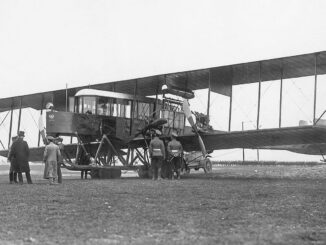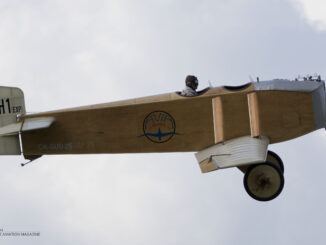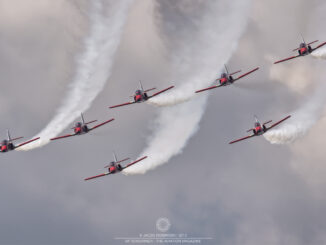 On 21 October 1947, 78 years ago from today, the Leduc 0.10 experimental aircraft performed its first free-gliding flight. Just over a year later, the aeroplane designed by René Leduc, a French aviation engineer, made aviation history with the first successful flight of an aircraft powered solely by a ramjet engine.
On 21 October 1947, 78 years ago from today, the Leduc 0.10 experimental aircraft performed its first free-gliding flight. Just over a year later, the aeroplane designed by René Leduc, a French aviation engineer, made aviation history with the first successful flight of an aircraft powered solely by a ramjet engine.
René Henri Leduc was born on 24 April 1898. As a teenager, he began working as an apprentice mechanic. During the Great War, Leduc joined the army and eventually became an artillery officer.
After the war, Leduc studied at the prestigious École supérieure d’électricité (Higher School of Electricity) and later began working for the Breguet company. In 1933, he filed a patent for a “Process for transforming heat energy into kinetic or potential energy”. Based on ideas initially proposed by René Lorin in 1913, the Leduc´s patent was later regarded as the foundation of the ramjet propulsion system.
Leduc’s patent attracted considerable attention. The concept of an air-breathing jet engine impressed both Louis Breguet and the French Ministry of Aviation, securing the funding he needed for further development. Within a short time, Leduc built several scale prototypes to demonstrate the expected performance of a ramjet engine.
In 1937, René Leduc started working on the Leduc 0.10 — the first French experimental aircraft to be powered solely by a ramjet engine. During the German occupation, the work continued in secret, and it was not until 1947 that the aeroplane was finally completed.
The Leduc 0.10 featured a double-shell cylindrical fuselage, with the pilot’s cockpit located inside the inner shell. The space between the inner and outer shells served as the air inlet for the ramjet engine.
As a ramjet engine requires forward motion to generate thrust, the aircraft could neither taxi nor take off from a standstill. Therefore, it was decided that the Leduc 0.10 would be carried aloft by a mother ship — a four-engine SNCASE SE.161 Languedoc airliner.
In November 1946, the Leduc 0.10 underwent its first test flights while mounted atop the airliner. The results were positive, and the aircraft was approved for free flights. On 21 October 1947, the Leduc 0.10, piloted by Jean Gonord, performed its maiden gliding flight.

On 21 April 1949, the Leduc 0.10 made aviation history when it became the first aircraft to be powered solely by a ramjet engine and complete a successful flight, with Gonord at the controls. During that initial flight, the engine was tested only half power, yet it enabled the aeroplane to reach a speed of 680 kph. Subsequent tests saw the Leduc 0.10 reach an altitude of 11,000 metres (36,000 feet) and a top speed of Mach 0.85.
Over the following years, René Leduc continued his work on ramjet-powered aircraft, experimenting with the air-launched 0.11 (or 0.16, according to some sources) and 0.21 models. The final aircraft in the series, designated the Leduc 0.22, took part in a French Air Force competition for a high-performance interceptor announced in 1953.
Unlike its predecessors, the Leduc 0.22 was equipped with an additional SNECMA turbojet engine, enabling it to take off autonomously. On 26 December 1956, the aircraft successfully completed its maiden flight, although powered only by the jet engine.
Ramjet-powered flights began on 18 May 1957. In December that year, the Leduc 0.22 achieved a speed of Mach 1.15. Regrettably, the prototype was destroyed shortly afterwards, when it caught fire during take-off.
At the beginning of 1958, the French military authorities cancelled the ramjet interceptor programme, in favour of a more conventional solution — the Dassault Mirage III jet fighter.
As a result, Leduc abandoned his aviation activities and turned his attention to hydraulic equipment. His new company, Hydro Leduc, soon achieved great success on the market.
René Leduc died on 9 March 1968, at the age of 69.
Additional information about the principles of the ramjet propulsion and current works on next generation scramjet engine can be found in one of our previous articles – 25 March 2006 – HyShot III, a scramjet engine, completed its second test flight.
Cover photo: Leduc 0.10 (San Diego Air and Space Museum Archive, 01_00082038, via Flickr Commons)



